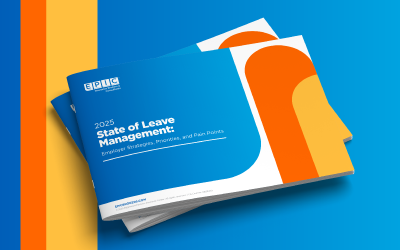COMPLIANCE ALERT
Agency FAQs Provide Clarity on the Mental Health Parity Comparative Analysis
Quick Facts
- New rules effective in February 2021 require group health plans that provide coverage for mental health and substance abuse benefits to prepare and provide upon request a comparative analysis of mental health non-quantitative treatment limitations.
- A set of recently released FAQs provides guidance for what is expected to be included in the analysis.
- If the comparative analysis is requested and found to be insufficient by a federal or state agency, the agency will suggest corrective action be taken within 45 days.
Recent legislation prioritizes enforcement efforts for existing rules that require parity for group health plan coverage of mental health and substance use disorder benefits. Group health plans that provide coverage for mental health or substance use disorder benefits and are therefore subject to mental health parity rules will soon be required to prepare a comparative analysis and have it available upon request. The carrier will handle this responsibility on behalf of fully insured group health plans, but employers offering a self-funded group health plan should coordinate with their third-party administrator (TPA) to determine compliance responsibilities for this new requirement.
Background
The Department of Labor (DOL), Health and Human Services (HHS) and the Treasury (collectively, “the Departments”) released frequently asked questions (FAQs) at the end of last week to provide guidance for the mental health parity comparative analysis requirement that went into effect on February 10, 2021. The FAQs confirm that group health plans that are subject to the mental health parity rules should now be prepared to make the analysis available upon request by federal or state agencies, or for plans subject to Employee Retirement Income Security Act (ERISA), by plan participants. In addition, the FAQs point to the steps in the DOL’s Self-Compliance Tool as a guide for what is expected to be included in the analysis. Insurance carriers will handle the analysis requirement for fully insured plans, but employers offering self-funded group health plans need to be taking steps to comply.
Comparative Analysis Requirements
Most group health plans offering mental health and/or substance use disorder benefits are subject to the mental health parity rules and are therefore required to provide such benefits in parity with medical/surgical benefits and are now also required to prepare a comparative analysis documenting compliance for any non-quantitative treatment limitations (NQTLs). The analysis does not need to be submitted annually, but instead is completed and kept up to date in the employer’s files and provided if requested (e.g. by a federal or state agency, or by plan participants). For more information on which group health plans are subject to the mental health parity rules and the parity requirements, see our previous Compliance Alert from March.
The comparative analysis is required to contain at least the following information:
- A clear description of the specific NQTL, plan terms, and policies at issue.
- Identification of the specific benefits to which the NQTL applies within each benefit classification, and a clear statement as to which benefits identified are treated as mental health or substance use disorder and which are treated as medical/surgical.
- Identification of any factors, evidentiary standards or sources, or strategies or processes considered in the design or application of the NQTL and in determining which benefits are subject to the NQTL. Analyses should explain whether any factors were given more weight than others and the reason(s) for doing so, including an evaluation of any specific data used in the determination.
- To the extent the plan or issuer defines any of the factors, evidentiary standards, strategies, or
- processes in a quantitative manner, it must include the precise definitions used and any supporting sources.
- The analyses, as documented, should explain whether there is any variation in the application of a guideline or standard used by the plan or issuer between mental health or substance use disorder and medical/surgical benefits and, if so, describe the process and factors used for establishing that variation.
- If the application of the NQTL turns on specific decisions in the administration of the benefits, the plan or issuer should identify the nature of the decisions, the decision maker(s), the timing of the decisions, and the qualifications of the decision maker(s).
- If the plan’s or issuer’s analyses rely upon any experts, the analyses, as documented, should include an assessment of each expert’s qualifications and the extent to which the plan or issuer ultimately relied upon each expert’s evaluations in setting recommendations.
- A reasoned discussion of the plan’s or issuer’s findings and conclusions as to the comparability of the processes, strategies, evidentiary standards, factors, and sources identified above within each affected classification, and their relative stringency, both as applied and as written. This discussion should include citations to any specific evidence considered and any results of analyses indicating that the plan or coverage is or is not in compliance.
- The date of the analyses and the name, title, and position of the person or persons who performed or participated in the comparative analyses.
The FAQs recommend that the following items be available to support the comparative analysis:
- Records documenting NQTL processes and detailing how the NQTLs are being applied to ensure the plan or issuer can demonstrate compliance with the law, including any materials that may have been prepared for compliance with any applicable reporting requirements under State law.
- Any documentation, including any guidelines, claims processing policies and procedures, or other standards that the plan or issuer has relied upon to determine that the NQTLs apply no more stringently to mental health or substance use disorder benefits than to medical/surgical benefits. Plans and issuers should include any available details as to how the standards were applied, and any internal testing, review, or analysis done by the plan or issuer to support its rationale.
- Samples of covered and denied mental health or substance use disorder and medical/surgical benefit claims.
- Documents with respect to service providers (if a plan delegates management of some or all mental health or substance use disorder benefits to another entity).
- If comparative analyses reference studies, testing, claims data, reports, or other considerations in defining or applying factors, then copies of those items should be available as well.
Exactly what is required will depend on the type of NQTL and the processes, strategies, evidentiary standards, and other factors used by the plan, but the FAQs make it clear that “conclusory or generalized statements without specific supporting evidence and detailed explanations, or a mere production of a large volume of documents without a clear explanation of how and why each document is relevant to the comparative analyses are insufficient.”
The DOL’s Self-Compliance Tool describes NQTLs on pages 19-21. It then goes on to provide a four-step process for analyzing NQTLs on pages 21-28. Applying and documenting the four steps for each of the plan’s NQTLs should generally satisfy the comparative analysis requirements.
Consequences of Non-Compliance
If the comparative analysis is requested and found to be insufficient by a federal or state agency, the agency will suggest corrective action be taken within 45 days. If the plan fails to comply with the suggested corrective action in a timely manner, the agency will notify enrolled individuals of the non-compliance and may also include the plan in a public report along with other non-compliant plans.
Keep in mind, the purpose of the comparative analysis is to provide further visibility into whether plans are compliant with the mental health parity requirements. Whether the analysis is determined to be sufficient or not, if an agency audit determines that any financial, quantitative, or non-quantitative treatment limitations (NQTLs) do not comply with the parity requirements, the plan may be required to take corrective action (e.g., reprocess claims and refund participants when applicable). In addition, non-compliant plans could be subject to a penalty of up to $100/day per affected individual, and if disclosures are not available upon request, general ERISA penalties could apply.
The legislation requires agencies to perform at least 20 audits per year. The DOL expects to focus initial efforts on enforcement of: (i) prior authorization requirements for in-network and out-of-network inpatient services; (ii) concurrent review for in-network and out-of-network inpatient and outpatient services; (iii) standards for provider admission to participate in a network, including reimbursement rates; and (iv) out-of-network reimbursement rates (plan methods for determining usual, customary, and reasonable charges). Very few employer plans are likely to face an audit over the next 12 months, but this serves as a reminder to further explore whether plans truly meet parity requirements and coordinate to ensure a comparative analysis is being completed for potential audit purposes.
Summary
When the comparative analysis requirements were added by the Consolidated Appropriations Act of 2021, the agencies were instructed to provide further guidance. The FAQs are meant to serve as guidance in the short term, since the requirement already went into effect as of February 10, 2021. The agencies will engage with stakeholders to determine what, if any, additional guidance is needed.
For fully insured plans, the carrier is primarily responsible for plan design, claims processing and this comparative analysis at the federal and state level. For self-funded plans, the employer is primarily responsible for compliance with the mental health parity rules, although the TPA often plays a role in plan design and claims processing. We have heard that not all TPAs are willing to help prepare a comparative analysis or audit more generally for compliance with the mental health parity rules, which leaves employers in a tough position. If TPAs will not assist with this requirement, it may be necessary to obtain the help of an outside benefits consulting firm or law firm.
See our Compliance Insight for info on the recent California ruling on ABA Therapy and the MHP Rule
EPIC Employee Benefits Compliance Services
For further information on this or any other topics, please contact your EPIC consulting team.
Learn About Our Employee Benefits Compliance Services
EPIC offers this material for general information only. EPIC does not intend this material to be, nor may any person receiving this information construe or rely on this material as, tax or legal advice. The matters addressed in this document and any related discussions or correspondence should be reviewed and discussed with legal counsel prior to acting or relying on these materials.
DOWNLOADABLE RESOURCES
Sign up for our Compliance Matters Newsletter
You’ll receive our monthly newsletter, as well as special compliance alerts and invitations to our compliance webinars
Related Content
Products
Employee Benefits Consulting
Our dedicated benefits team is focused on delivering better outcomes – to both your benefits program and ...
Products
Compliance
We provide comprehensive consulting services and in-depth education regarding the ever-changing employee ...
Products
Wellbeing & Health Management
Our consultants help you create a strategy around health management that will impact your culture and your ...


